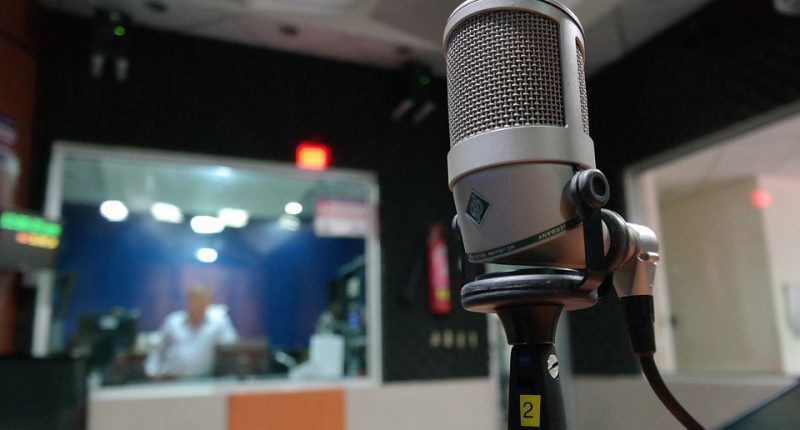Public radios have long since been a tool to discover new music by local and global artists. It can be a way for young, hopeful musicians to find idols and heroes. But for Raven Kanatakta, discovering Indigenous musicians was hard.
“My Indigenous musical heroes were all discovered by word of mouth or I saw them performing live,” says Kanatakta, from the Canadian musical group Digging Roots. “I rarely heard an Indigenous artist on the radio.”
Kanatakta says even hearing Buffy Sainte-Marie, Indigenous musician and multiple Juno Awards winner, on the radio was rare. He attributes this to the fact that most Indigenous music falls outside of standard mainstream tastes.
But a new Indigenous radio station is looking to change that. 106.5 ELMNT FM, which is produced by the Aboriginal Peoples Television Network (APTN), is the first of its kind to require a quarter of its content be Indigenous music, such as Digging Roots. The station launched in Ottawa and Toronto Oct. 24 at noon.
The radio station hopes that allocating 25 per cent of its air time to Indigenous content will give more Indigenous artists an opportunity to expand their reach to urban listeners, probably for the first time.
“We have a great opportunity, not only for our community, but for Canadians in general,” says Jean La Rose, the chief executive officer at APTN.
“The first point here is to create an opportunity for our musical talent,” he says. “Most Canadians aren’t aware of [Indigenous artists], and wouldn’t know where to find it because right now mainstream radio doesn’t carry their music.”
Indigenous music is also a form of storytelling, a way for artists to narrate “blood memory,” according to Kanatakta, referencing the power of this type of music to pass along Indigenous knowledge. Cultural ideas and philosophies are interwoven into the music.
In AK47, for instance, a recent single from Digging Roots, they use their music as a platform to draw attention to missing and murdered Indigenous women and men languishing in Canadian prisons: “fire for the brothers doing hard time, fire for the sisters who we cannot find.”
Having space for such voices should have happened a long time ago, says Kanatakta, “But if it’s going to happen now, then great! There are so many artists that need to be heard by the larger community.”
AK47 by Digging Roots follows the wake of gun violence, is about ‘opening fire on hate, oppression and violence’ with love. Courtesy of Digging Roots Music
According to La Rose, from his perspective there is very little, if any, Indigenous content played on mainstream radio stations. While artists such as A Tribe Called Red and Tanya Tagaq have become more well known, mandating 25 per cent Indigenous content will showcase a variety of musical artists, giving them airtime that didn’t exist before.
Chaka Grier, a musical culture journalist at Now Magazine, says the 25 per cent mixed in with non-Indigenous music is “finally bringing Indigenous music where it belongs,” alongside non-Indigenous musicians. Mixing artists like A Tribe Called Red with Diplo shows the public and media that Indigenous music is relevant.
“It does tell journalists this isn’t a group anymore to just set aside,” says Grier. She adds when media segregates musicians based on their culture or ethnicity, it validates treating the musicians “in a specific way.” The mix of Indigenous and non-Indigenous music will work against this.
Although the Canadian Radio-television and telecommunication commission (CRTC) mandates airtime to Canadian music, it has never required any Indigenous music to be played. Currently, commercial, community and campus radio stations must ensure 35 per cent of its “popular music” is Canadian content each week, says the CRTC’s website.
“Mandating Indigenous content is a proactive move for radio,” says Kanatakta. “Music is always evolving, expanding and growing. Having Indigenous music included on public radio will broaden and brighten the creative fabric of this country.”

